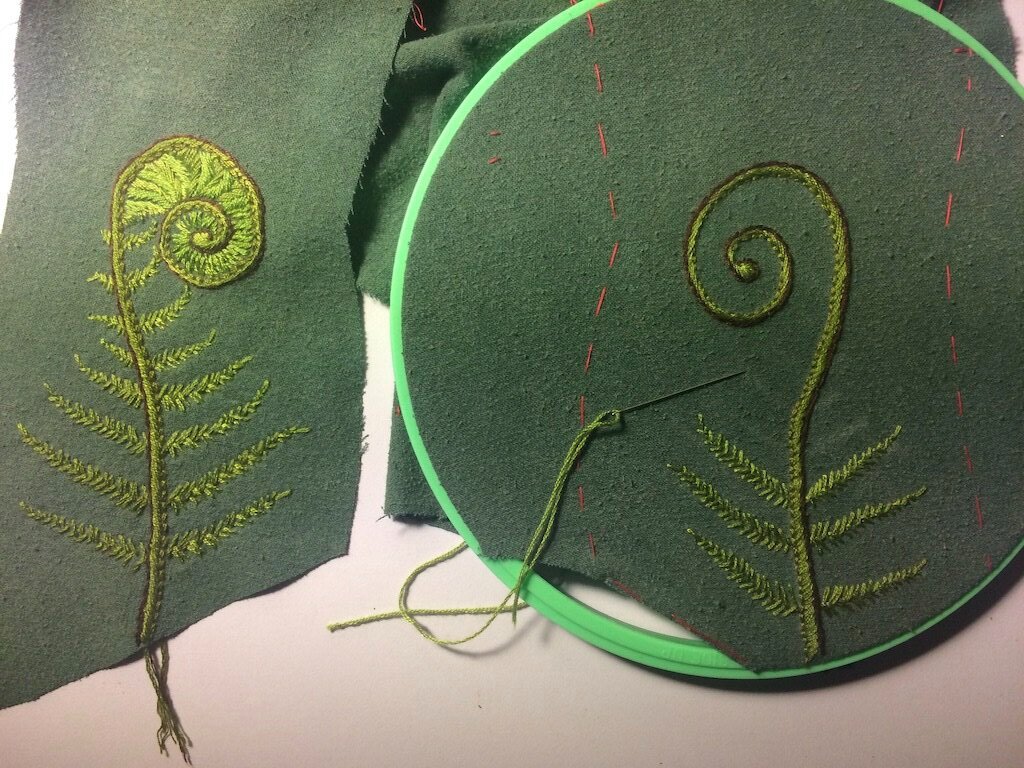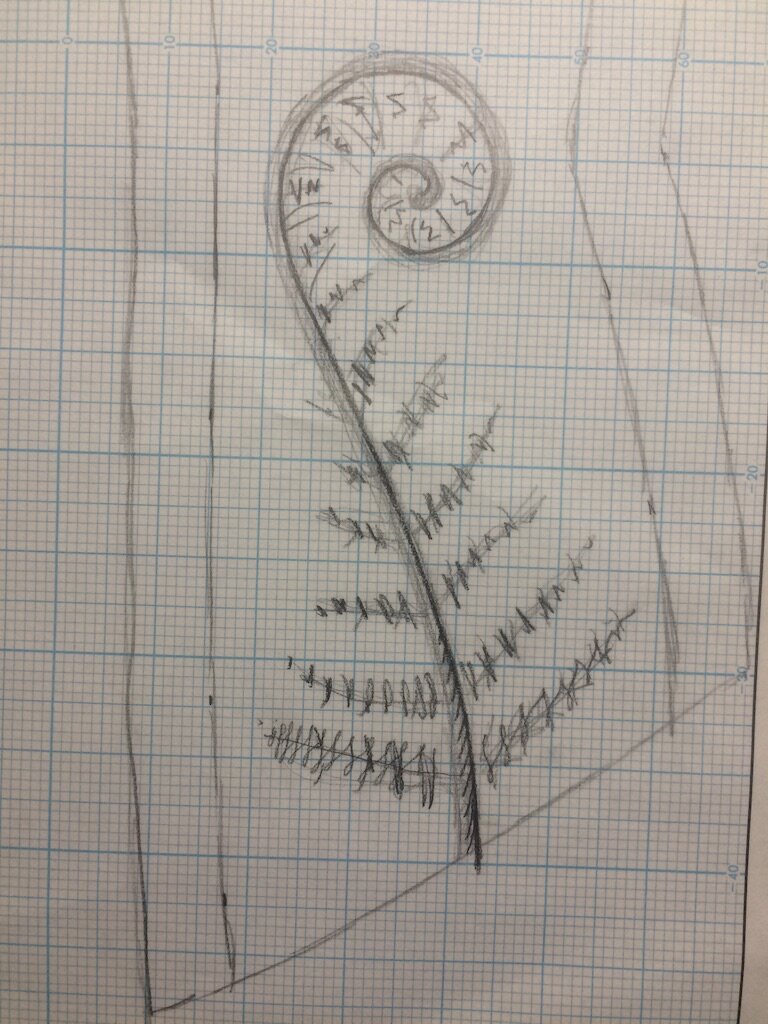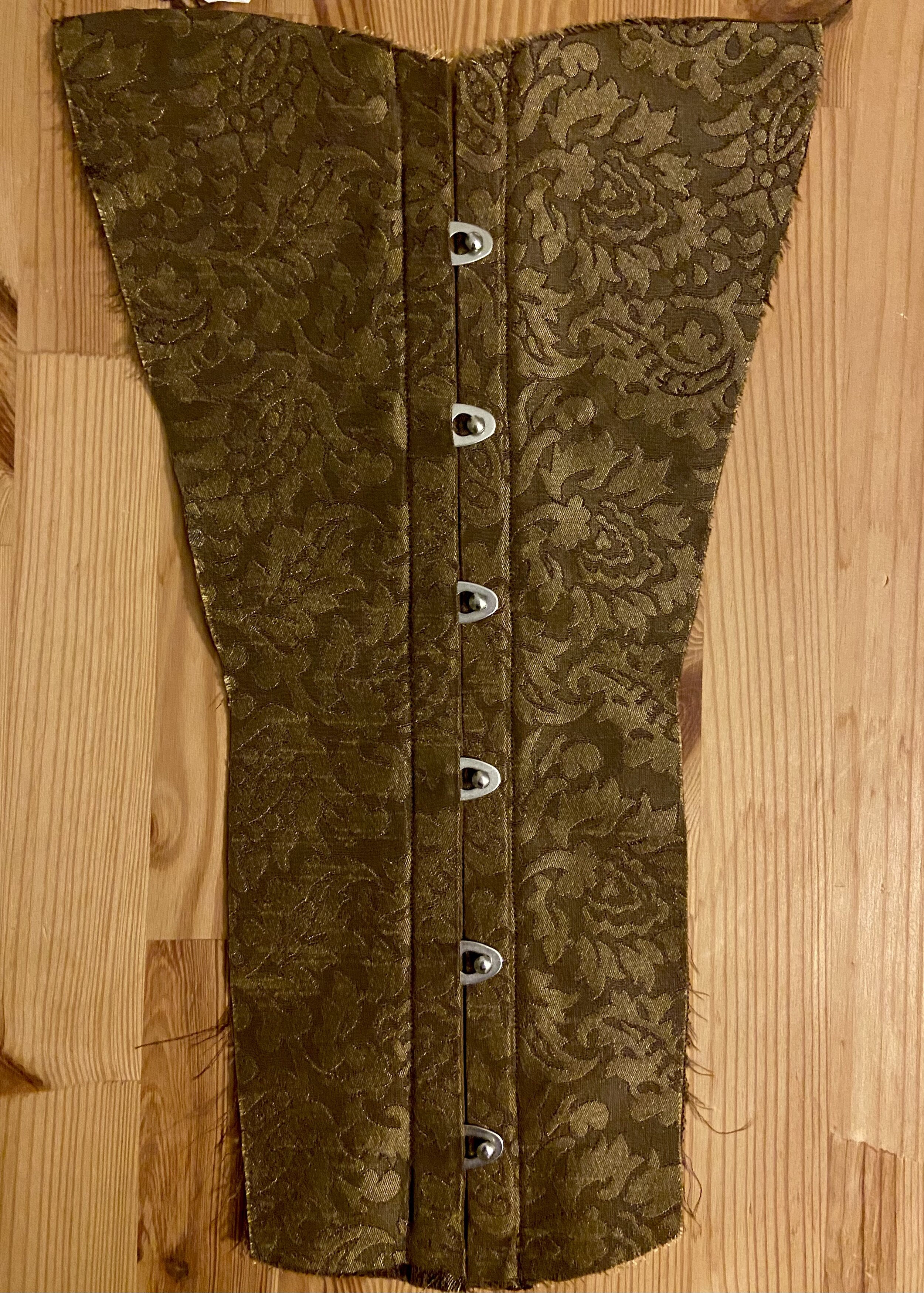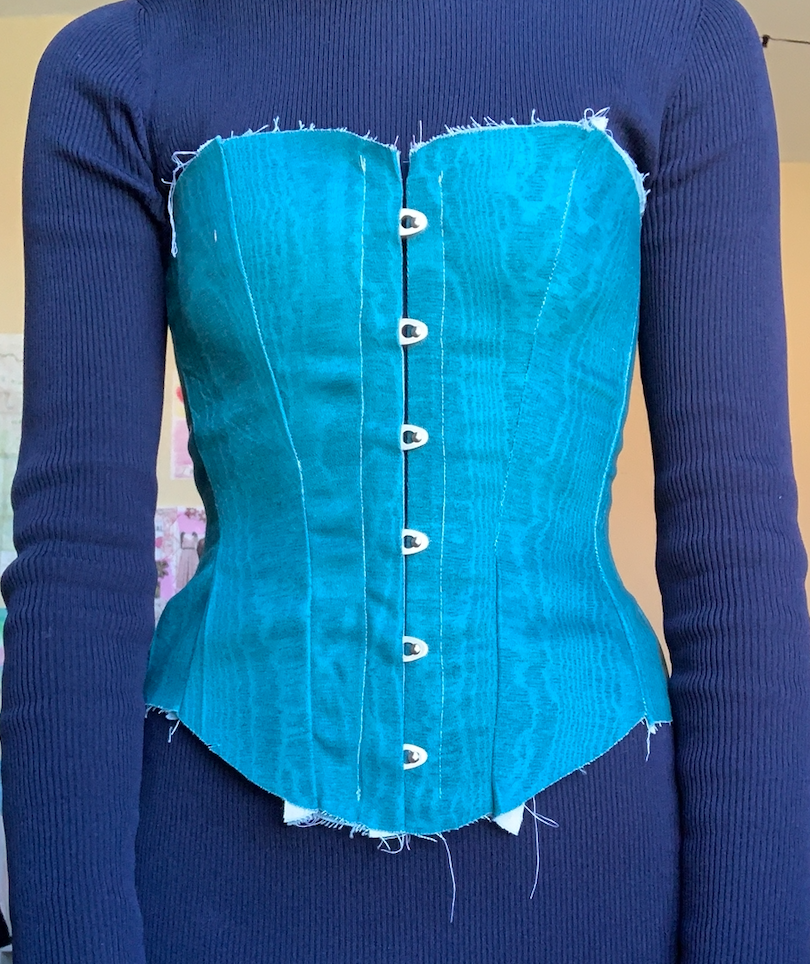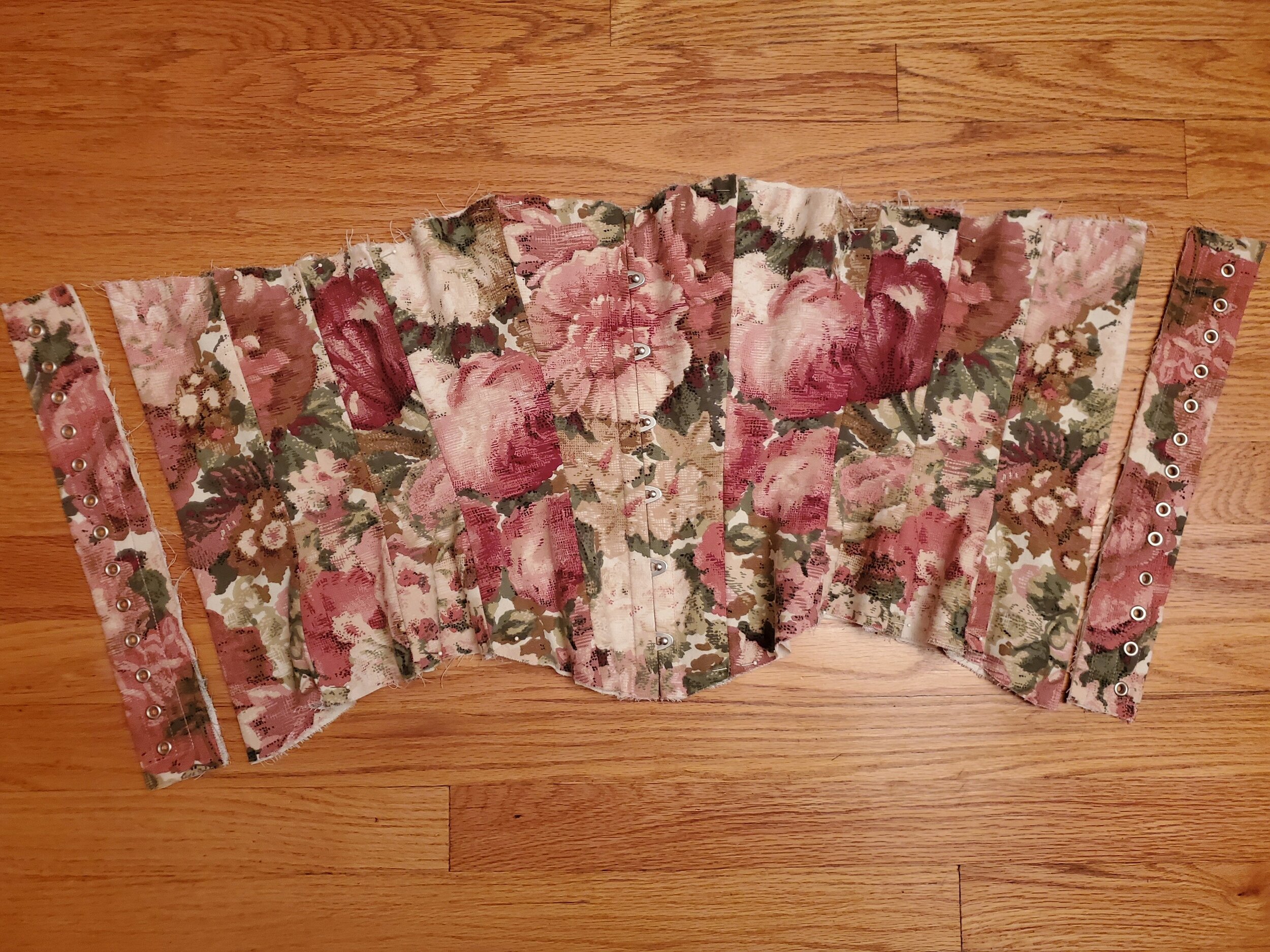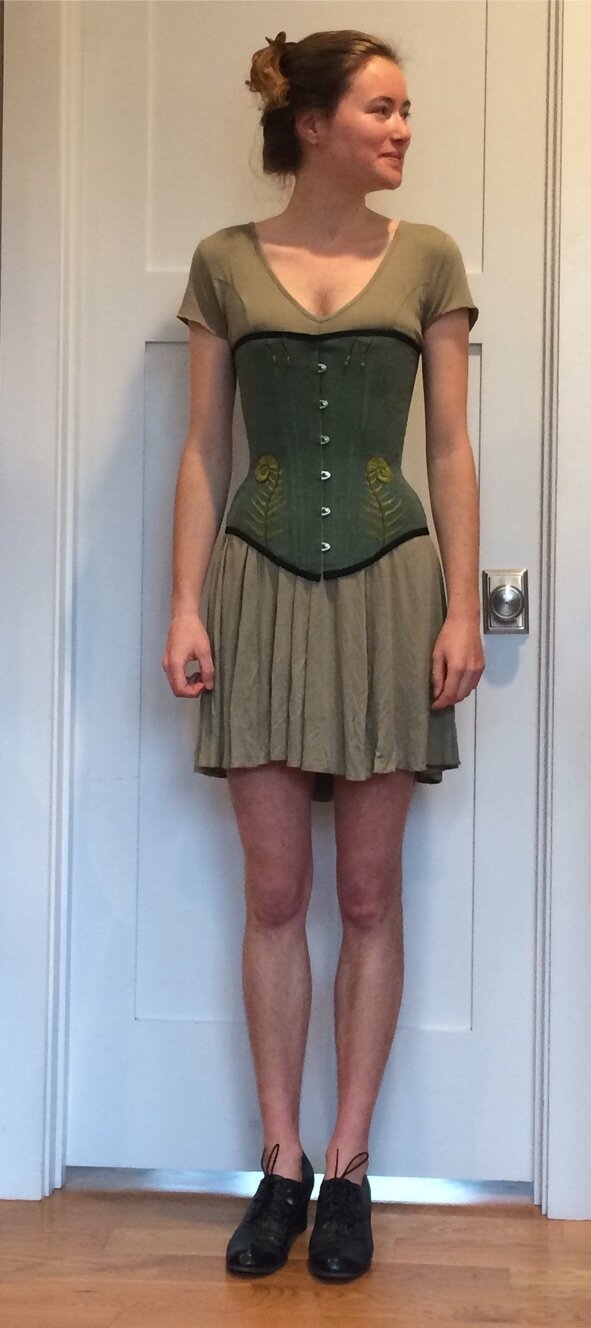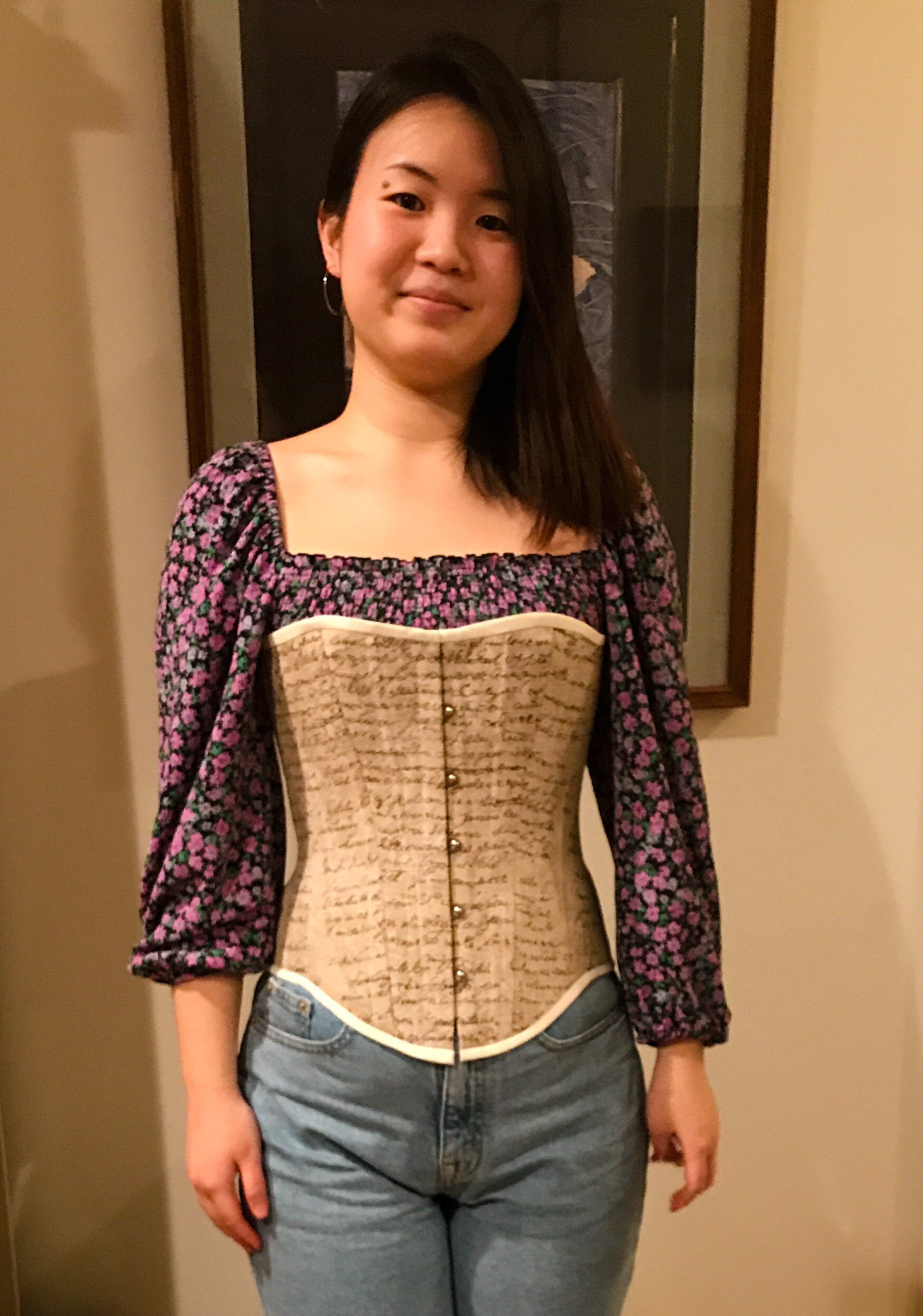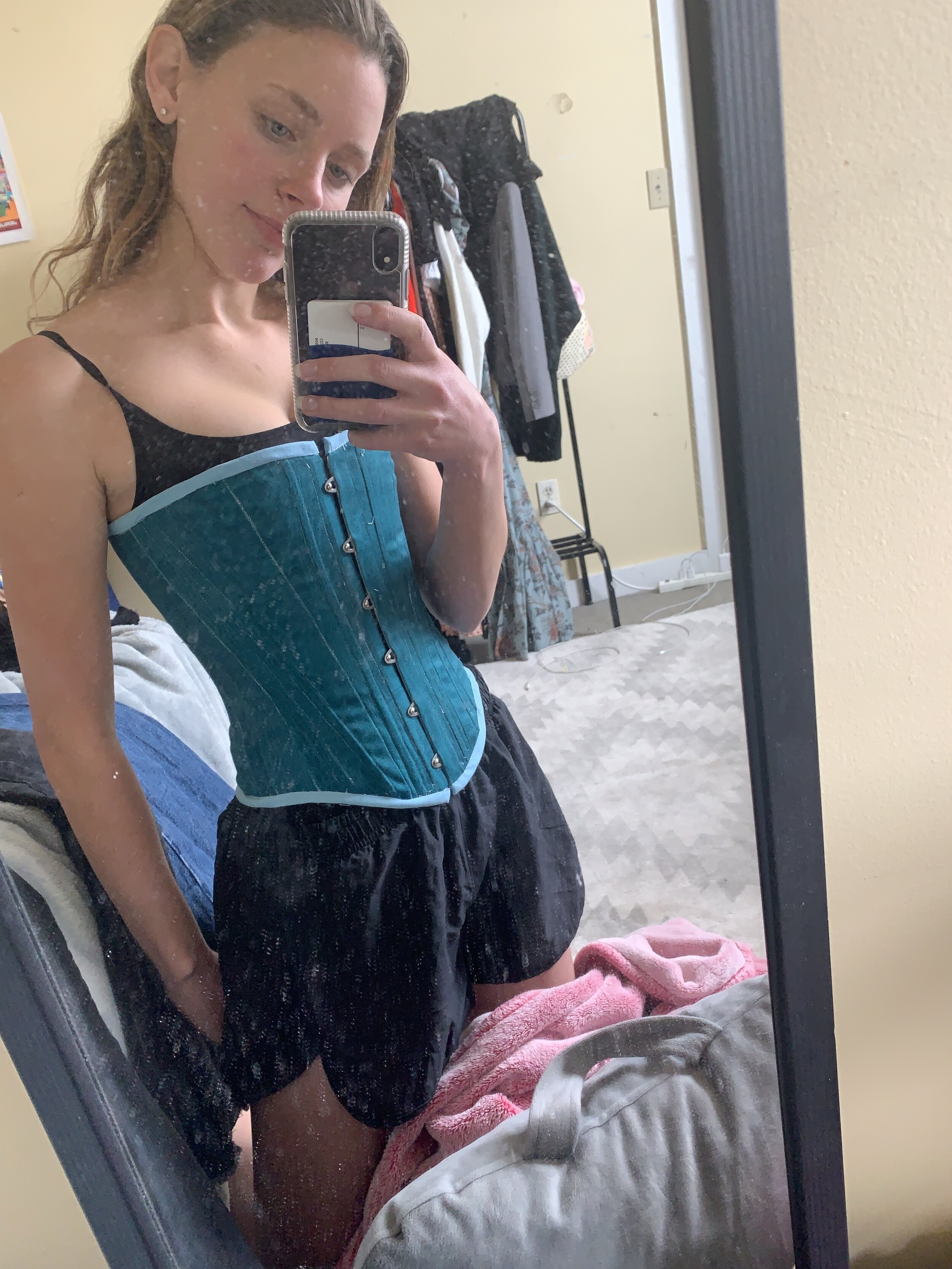On Middlebury’s Winter Term Corsetry Course
By Madison Brito & Meili Huang
Cover image by Laura Lardinois
While the past year has seen a spike in heavily individualized style and a desire for the homemade, reused, or simply eclectic, a passion for making is nothing new to our campus. This winter term, Carol Wood and Robin Foster Cole had 10 students left on the waitlist for their 15-seat Introduction to Corsetry class - a course that required owning a machine and basic sewing abilities, no less. From freshmen who have been makers since they were six years old to seniors with elementary alteration skills, an outwardly niche subject is compelling enough to our students to embark on a four week, intensive winter term course. What compels us to want to make garments from centuries past and create things with our own hands when outsourcing is easier than ever is another article itself, but the course is no doubt a testament to our liberal arts education - we can discuss poetry from the 19th century in one class, while literally constructing lingerie from that century in another.
Introduction to Corsetry involved a mixture of historical lessons on the garments and their siblings or silhouettes while we continuously constructed a corset at a fast clip - by the second day of class, we had all made an entire ‘fit’ corset out of muslin fabric - and all of this was completely remote. For Alexis Welch, Corsetry “has been one of the most successful zoom classes [she has] taken at Middlebury.” Below, students share their experiences taking the course, from why they signed up in the first place to why they loved it.
What compelled you to take this course? Do you have a background in making?
“I have a huge interest in historical dress and have been actively making historically based patterns for about three years now, before that most of the sewing I did was just practical, around the house repair jobs. One of the other sewing projects I am working on right now is an 18th century mens undershirt/pirate shirt and I have begun the planning process for my next project, a pair of early 17th century stays. One of my other historical dress projects that I am working on is a piece of European 4-in-1 style mail. I also dabble in making my own jewelry, particularly earrings.” Líle Casey
“I've always loved hand sewing, especially making doll clothes and stuffed animals when I was little. Recently, I've done more sewing on paper than on fabric, using thread to embellish cards and doing a bit of bookbinding. My grandmother would work on larger projects with me on the sewing machine whenever she came to visit over spring break, bringing fabric and findings from my great aunt's stash.” Laura Lardinois
Images from Laura’s design process. She speaks to her experience with embroidery … “my mother would set out her best tablecloth, a large white cotton cloth hand embroidered by her godmother as a wedding present. I loved tracing the lines of stitches, beautiful both on the outside and the inside, imagining the needle pulling through the fabric [...] I began experimenting with stitching on paper, inspired by a local artist who made beautiful works out of rice paper and thread. From there I eventually drifted back to working on cloth when I had it on hand, loving the texture accompanying the designs and the way my rough sketch on paper appears stitch by stitch.”
The Process:
Click HERE to watch Meili’s video documenting the process
(Left) Laura’s corset rendering, (Right) Center front with busk of Piara Bigg’s corset
(Left) My ‘fit’ corset made with muslin fabric, (Right) My corset with final fabric before alterations & binding seams
(Left) Ola Zalecki inserting grommets, (Right) Ola’s corset before attaching lacing placket
What has been challenging about this course?
“I think one of the more challenging aspects has been the fitting, as it is harder for Carol [our instructor] to see what needs to be altered. But technically, the most difficult thing was sewing the fashion fabric and the lining together… I had to redo my stitching about four or five times… Despite these frustrations, I have truly enjoyed working with my hands this j-term.” Alexis Welch
(Left to right) Laura’s final corset, Meili’s final corset, and my final corset (excuse the mess and mirror!)
… Rewarding? Informative?
“I've loved seeing how the same basic pattern we're using fits to each person's unique form and how each corset slowly gained character as we worked on it.” Laura
“I have really enjoyed working in breakout rooms, working together on the same steps even though we are in different locations. I feel like there was a surprising amount of community building for only recently meeting the other members of my group.” Alexis
“There are so many myths about [corsets]. I've worn them more times than I can count because of renaissance fairs and they truly aren’t the torture device that a lot of modern media makes them out to be.” Líle
“I haven’t had much sewing experience before taking this course. Seeing how a corset is constructed step by step was the most mesmerizing part to me. I would’ve never imagined that there is so much effort, thoughtfulness, and creativity behind just one piece of garment. Though the course is tailored around corsetry, I think it has also gotten me to appreciate other garments, too. My thought process behind daily Instagram scrolling has shifted from ‘I like this piece’ to ‘How is this put together? Can I possibly make it?!’ I think this course has opened a door for me. Now I can’t wait to take on more sewing projects in the future!” Meili
